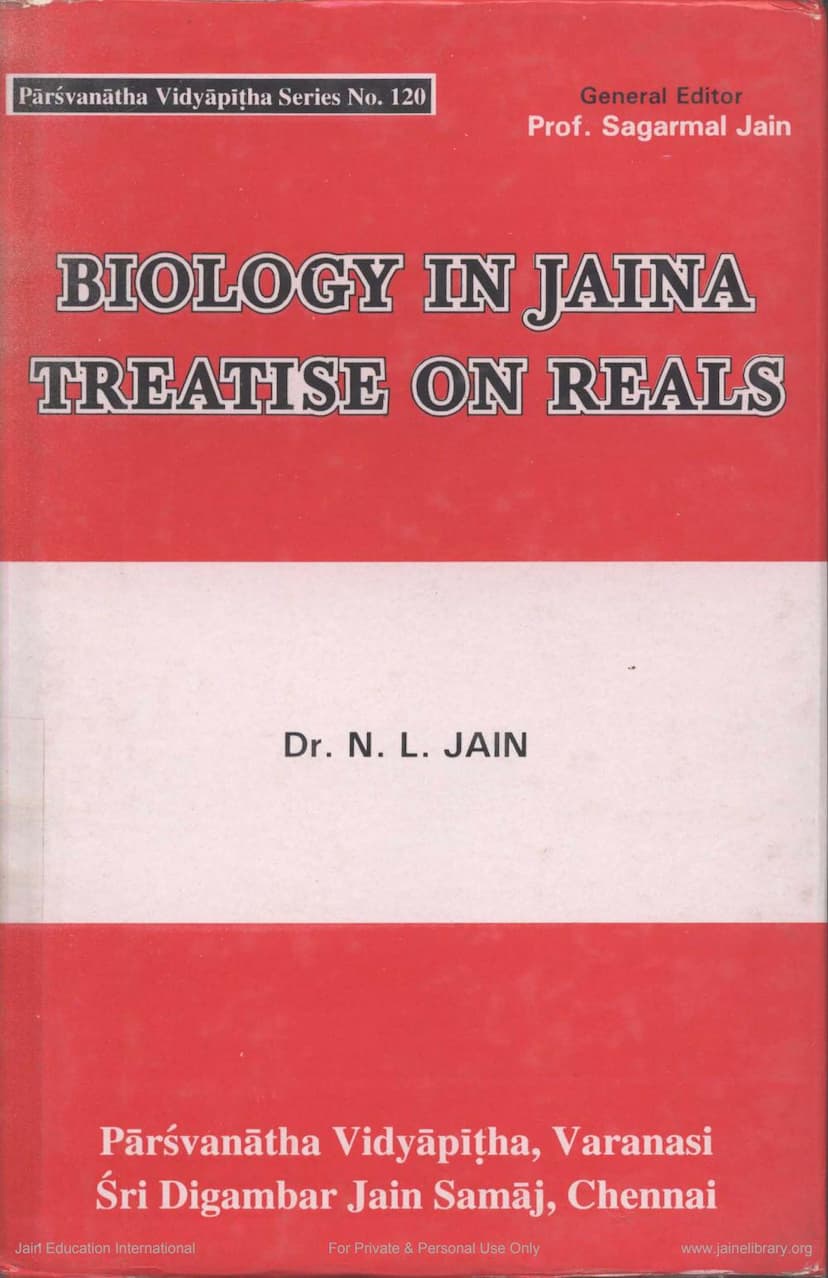Biology In Jaina Treatise On Reals
Added to library: September 1, 2025

Summary
This book, "Biology in Jaina Treatise on Reals" by Dr. N. L. Jain, is an English translation and commentary on Chapter Two of the Tattvārtha-Rājavārtika by Bhatta Akalanka. The Tattvārtha-Rājavārtika is an extensive commentary on the Tattvārtha Sūtra, a foundational text of Jainism composed by Acārya Umāsvāmi in the 3rd century AD.
The book focuses on the Jaina understanding of the "living being" (Jiva), which is the first of the seven fundamental categories of reality in Jainism. This chapter delves into twelve key aspects related to living beings, providing a comprehensive overview of Jaina biology as presented in ancient texts.
Key Themes and Contents:
- Definition and Classification of Living Beings: The text defines living beings based on volitional states (five types: subsidence, destruction, destruction-cum-subsidence, realization, and inherent) and perceptive attributes of consciousness. Living beings are classified based on senses (one-sensed to five-sensed), mind (mind-possessing and non-mind-possessing), and karmic tendencies (mobile and non-mobile).
- Biology and Physiology: It details the senses (five cognitive senses: touch, taste, smell, sight, hearing, and their physical and psychical varieties), vitalities (four in one-sensed beings, up to ten in others), and the concept of bodies (five types: gross, transformable, ejectable, luminous, and karmic). The book explores the relationship between these bodies, their fineness, space occupancy, and longevity.
- Transmigration, Birth, and Death: A significant portion is dedicated to the process of transmigration, including different types of motion (linear, curved with bends), the duration of these motions (in Samayas), and the concept of intake during this process. It describes three types of birth (agglutinational/a-sexual, uterine/sexual, and special-bed) and the nine types of birthplaces (classified by livingness, temperature, and enclosure).
- Genders and Volitions: The text discusses the genders (male, female, neuter) of different classes of beings and the various volitional states that characterize living beings, linking them to karmic processes.
- Scientific and Philosophical Context: Dr. Jain's work aims to present these ancient Jaina concepts in a way that is understandable to modern readers, drawing parallels with contemporary scientific facts and evaluating the Jaina views in light of current knowledge. The publisher's note and the author's acknowledgments highlight the collaboration with the Indian National Science Academy (INSA) and the effort to make traditional Jaina texts accessible in English.
- Commentary and Translation: The book is not just a translation but includes supplementary notes and critical evaluations based on various Jaina commentaries and scientific facts. It addresses the complexities of Jaina terminology and philosophical debates, particularly concerning the authorship of the Tattvārtha Sūtra and the variations between Digambara and Svetambara traditions.
Overall Significance:
"Biology in Jaina Treatise on Reals" aims to bridge the gap between ancient Jaina wisdom and modern scientific understanding, showcasing the sophisticated biological and physiological concepts present in Jaina scriptures. It demonstrates the Jainas' detailed understanding of the natural world, life processes, and the intricate relationship between the soul, karma, and the physical body, offering valuable insights into the historical development of scientific thought within Jainism. The book emphasizes the Jaina emphasis on logic, polyviewism, and the meticulous observation of the natural world.